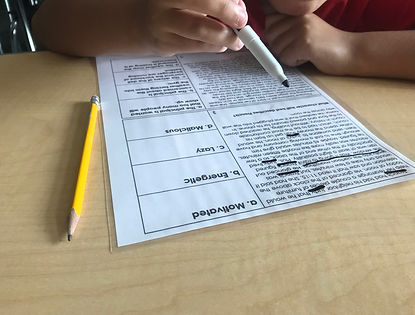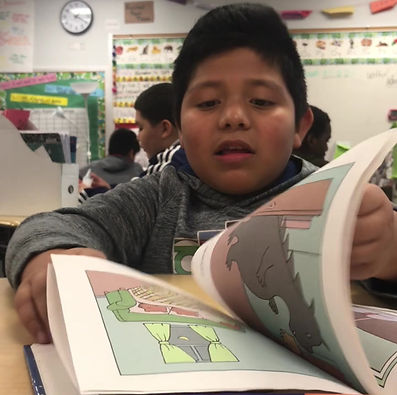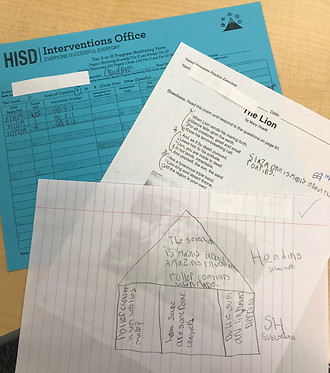Small Group Planning
Depending on student need from diagnostic data, I pull students with similar skill sets to my table. There we work in ratios of 1:1, 3:1, 4:1, and 5:1. The groups are ever evolving based on feedback from daily exit tickets and unit assessment. Planning for this comes from past assessment misconceptions. Small group instruction highlights the strengths and needs of individual learners and allows me to respond to these strengths and needs. Students choral read the text and frequently pause for discussion and comprehension checks. After reading the text, we focus on a single question. We determine what the reader is being asked and finding textual evidence to support our claims. Reteach and comprehension work occurs during this time, as well as question break down. Planning looks like analyzing past texts and finding true meaning from it.
Flexible Skill Based Grouping


Intervention bin to keep record of student misconceptions and progress.


Student with IEP specifying one on one intervention.
Last year, this student would frequently state, "Miss Cordova, I cannot read nothing." Now he proudly says, "I can read a little!"




Examples of student small group work filed in RTI bin and documented using HISD intervention log.
All of my students receive intervention through small group instruction. For students who solely require whole group instruction, I conduct book studies. However over two-thirds of my students require skill based instruction for additional support aside from whole group lessons. During this time, I reteach and model strategies of comprehension. Students create their own work samples based from this work time. Samples are collected in our Response to Intervention filing system.
Leveled Engaging Informational Texts of Study for Small Group
To use this resource well, I collaborated with our campus Literacy Specialist to gain insight to their expertise. They modeled scaffolding questions for my meeting, mastering, and below grade level students. This impacted my practice tremendously by providing much needed logic in questioning.
Student responding to appropriate questioning.
These texts specifically allowed cross-disciplinary studies for students to dabble in science.


In our small group time, students work on skills through a variety of tasks such as developing sentence stems, white board work, task cards, and choral reading.